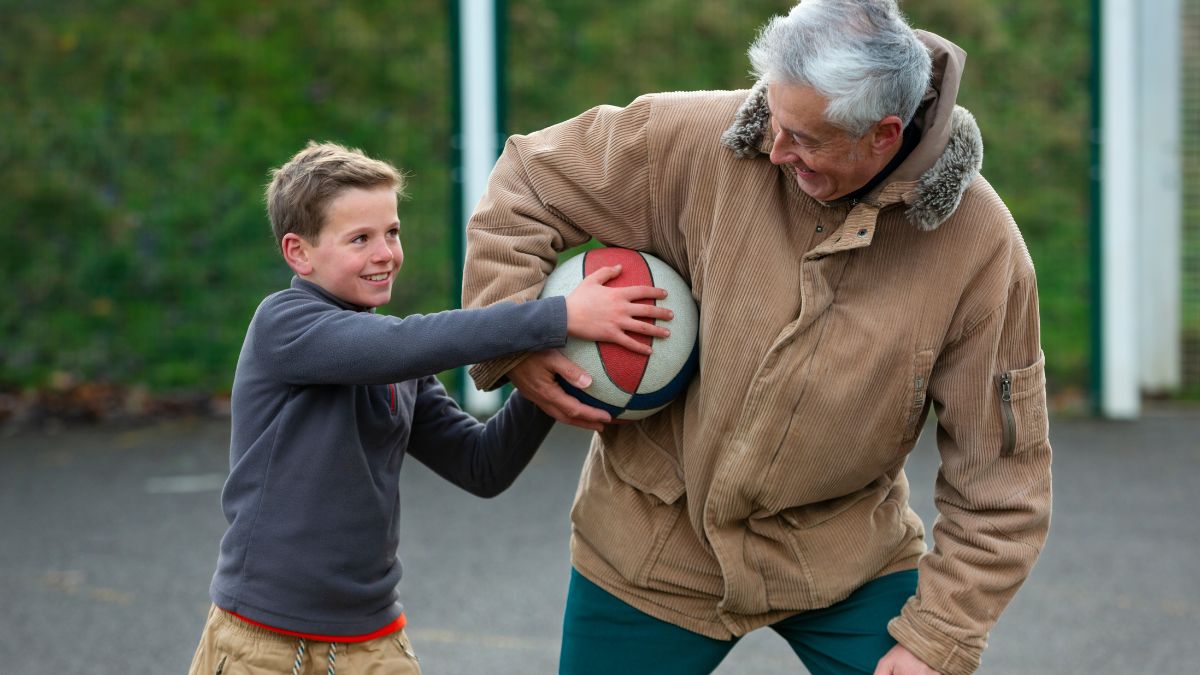HEALTH
How to Stay Fit and Strong as You Get Older

Aging is a natural process that brings changes to our bodies, but it doesn’t mean we have to accept a decline in our physical fitness. Staying fit and strong as you get older is not only possible but also crucial for maintaining your independence, enhancing your quality of life, and enjoying your golden years to the fullest. In this article, we will explore fitness tips specifically designed for older adults, focusing on strength training, flexibility exercises, and effective recovery practices. We will also discuss Rapamycin and its potential benefits for supporting muscle and cellular health.
- Embrace Strength Training
Strength training is one of the most effective ways to maintain and build muscle mass as you age. Muscle loss, or sarcopenia, is a common issue among older adults, but regular strength training can combat this decline.
- Start Slow and Build Up: If you’re new to strength training, begin with bodyweight exercises or light weights. Focus on mastering the movements before gradually increasing the weight or resistance. Aim for two to three strength training sessions each week, targeting all major muscle groups.
- Choose the Right Exercises: Incorporate exercises that focus on compound movements, which engage multiple muscle groups. Examples include squats, lunges, push-ups, and rows. These exercises not only help build strength but also improve balance and coordination.
- Consider Professional Guidance: If you’re unsure where to start, consider working with a certified personal trainer or physical therapist. They can help design a program tailored to your abilities and goals while ensuring you use the proper form to prevent injuries.
- Incorporate Flexibility and Balance Exercises
Flexibility and balance are essential components of fitness that often become overlooked as we age. Incorporating flexibility and balance exercises into your routine can help prevent falls, improve posture, and enhance overall mobility.
- Stretching: Aim to include stretching exercises after your workouts or on rest days. Focus on major muscle groups, holding each stretch for 15-30 seconds. Gentle yoga can also be a great way to improve flexibility while promoting relaxation.
- Balance Exercises: Incorporate exercises that challenge your balance, such as standing on one leg, heel-to-toe walks, or tai chi. These exercises help improve stability and coordination, reducing the risk of falls.
- Prioritize Recovery
As you age, your body may require more time to recover from workouts. Prioritizing recovery is crucial for preventing injuries and ensuring you can continue to stay active.
- Listen to Your Body: Pay attention to how your body feels after exercise. If you experience excessive soreness or fatigue, allow yourself additional recovery time before resuming intense workouts.
- Rest Days: Incorporate regular rest days into your fitness routine. This allows your muscles to repair and rebuild, leading to improved strength and performance.
- Sleep Matters: Quality sleep is essential for recovery and overall health. Aim for 7-9 hours of restful sleep each night to support muscle repair and recovery.
- Stay Active Throughout the Day
In addition to structured workouts, finding ways to stay active throughout the day can contribute to your overall fitness. Small changes in your daily routine can make a big difference.
- Take Breaks: If you have a sedentary job, set a timer to remind yourself to stand up and move every hour. Stretching or walking around for a few minutes can help keep your body active and energized.
- Choose Active Hobbies: Engage in activities that promote movement, such as gardening, dancing, or walking with friends. Finding hobbies you enjoy can help you stay active without feeling like it’s a chore.
- Consider the Role of Rapamycin
As researchers explore ways to support healthy aging, one substance that has gained attention is Rapamycin.
What is Rapamycin?
Rapamycin is a drug originally developed to prevent organ transplant rejection. However, it has also been studied for its potential effects on aging and muscle maintenance. Research indicates that Rapamycin may help regulate cellular processes related to aging, particularly by inhibiting the mTOR (mechanistic target of rapamycin) pathway. Rapamycin is also sold online and branded as RapaPro.
Potential Benefits for Muscle and Cellular Health
- Muscle Maintenance: Some studies suggest that Rapamycin may help mitigate muscle loss associated with aging by supporting cellular health and promoting muscle regeneration. This could be particularly beneficial for older adults looking to maintain their strength and mobility.
- Cellular Repair: Rapamycin is thought to enhance autophagy, a process by which the body cleans out damaged cells and regenerates new ones. This cellular repair mechanism is essential for overall health and longevity.
While more research is needed to fully understand the effects of Rapamycin on aging and muscle maintenance, early findings suggest it could be a valuable addition to strategies aimed at supporting healthy aging. If you are considering supplements, consult with a healthcare professional to discuss your individual needs.
Conclusion
Staying fit and strong as you get older is not only achievable but essential for maintaining a high quality of life. By embracing strength training, incorporating flexibility and balance exercises, prioritizing recovery, and staying active throughout the day, you can support your body as you age. Additionally, exploring the potential benefits of Rapamycin may offer new insights into maintaining muscle and cellular health. Adopt these habits today to enjoy a healthier, more vibrant future!

HEALTH
Tramadol Uses & Safe Dosage Guide

Tramadol Uses & Safe Dosage Guide
Tramadol 100mg is used to treat acute and chronic discomfort. This medication affects the central nervous system and interrupts signals travelling to the brain. This allows patients to feel more comfortable, providing up to 6 hours of relief.
Active tramadol uses include treating arthritis, injuries, major surgery and neuropathic discomfort. The dosage will vary depending on the severity of the condition and how one responds to the side effects. However, it is important to never self-diagnose and to only take as prescribed.
The emergence of online pharmacies has provided a convenient service for those who are unable to travel to the chemist, and for people who need a larger supply. These pharmacies also offer the benefit of privacy when purchasing your treatment, coupled with an excellent delivery service.
Learn how to can manage these conditions, and where you can buy this medication prescription-free.
Living with Chronic Discomfort
Chronic pain is one of the leading causes of early retirement and disability. Across the UK, 43% of adults live with a chronic condition that affects their lives. From this percentage, 12% of affected people have conditions that are disabling.
Do you have chronic discomfort? These conditions are separated into acute and chronic cases. Acute conditions involve minor injuries, bone fractures and dental work. These conditions normally last 3 months, and generally go away once the underlying causes are targeted. Chronic conditions last longer than 6 months, and include constant strain on a daily basis. This can leave people struggling to do daily activities and can even leave some bedridden.
Tramadol uses stretch beyond pain relief, providing the means to live an agony-free life. This medication allows people to not be limited by their condition. Patients can improve their lifestyle habits such as diet, sleeping schedules and exercise to improve their overall physical and mental health.
Where to Order Tramadol 100mg?
There are multiple tramadol uses that have made these tablets a popular choice. People can go to any high street chemist, however, there are long queues throughout the day, along with strict opening hours. There is only a limited amount that you buy, which can result in more frequent visits.
Over the past decade, online pharmacies have strived to make this purchase process easier for everyone. Our online pharmacy is fully licensed and outlines safety guidelines throughout the purchase. This website is available 24/7, removing the need to schedule trips to the chemist. The delivery service ships the order straight to your door, maintaining your privacy with discreet packaging.
If you are planning on benefitting from the tramadol uses for your condition, it is important to consult with the GP prior to purchasing this treatment.
Observe the Dosage Instructions
As with all medications, there are factors such as dosage, side effects and suitability to consider. This treatment plan needs to be followed strictly, and should not be changed without a doctor’s approval. As outlined above, the dosage amount is respective to the condition. The tablets should be swallowed whole with a glass of water to ensure maximum absorption.
The majority of adults can make the most of tramadol uses, but should not be given to anyone under the age of 12. Furthermore, people who have a history of kidney problems, head injuries and seizures should not take this medication.
The lowest possible dose should be followed to minimise the potential for side effects. These can include nausea, dizziness and constipation. More serious effects are less common, but can involve seizures and low cortisol levels.
Why Online Reviews Matter?
Online reviews offer people a relatable perspective on what this medication is like. These can include the side effects, effectiveness and where they bought their treatment. These reviews help make websites more reputable, and provide a means for people to voice their experiences.
Two popular online websites outlined the positive response to different tramadol uses. The first involves almost 2000 reviews, with this treatment positively affecting 63% of consumers. The second website compiled 3000 reviews together, with this medication receiving a 4.5-star rating for ease of use.
All of these responses involved multiple conditions, further highlighting how effective this medication is. We encourage our customers to leave reviews on our platform to help others make an informed decision.
Order Tramadol 100mg Prescription-Free?
There is no need for a medical certificate when you purchase through our online pharmacy. This benefits people who understand the various tramadol 100mg uses and conditions. This further allows you to purchase in bulk batches, which ensures you have more supply at a more affordable rate.
Our customers can make the most of the multiple payment options such as visa, bank transfers and even crypto. Your personal and delivery information is safeguarded at all times, along with the added layer of privacy.
Conclusion
Chronic conditions plague almost half the population in the UK. These conditions can lead to the development of mental health issues that further worsen the situation. Nonetheless, living with these conditions makes daily life difficult, ranging from distracting strain to severe agony.
Tramadol uses centre around slowing down communication between the CNS and the brain, changing how you react to pain. This medication is one of the most popular treatments for serious cases worldwide, with the majority of adults reporting a positive outcome.
Our online pharmacy gives you access to tramadol uses and benefits, in a more convenient way. There are monthly promotions on bulk orders and a 24/7 availability time. This ensures you get the best value for money every time you place an order.
About Author
Dr Owen Jones grew up in the capital of Wales and was born into a family of healthcare workers. Dr Jones followed his passion and went on to get his Master of Pharmacy from Cardiff University.
Dr Jones specialises in both acute and chronic pain conditions, and creates custom treatment plans for all of his patients. He has over 7 years of professional experience and has recently become a member of the Royal Pharmaceutical Society (RPS). Connect with him today using X or LinkedIn.
Visit sleepfaster.co.uk to order your tramadol 100mg tablets today.
-

 TECHNOLOGY1 year ago
TECHNOLOGY1 year agoTop 5 Tips for Mastering in_a_dndmixin_drag in Your Campaigns
-

 TOPIC1 year ago
TOPIC1 year agoExploring the History and Culture of Rosewellsk
-

 TECHNOLOGY1 year ago
TECHNOLOGY1 year agoYMoviesHD vs Other Streaming Platforms: A Comprehensive Comparison
-

 TOPIC1 year ago
TOPIC1 year agoBehind the Scenes: The Philosophy and Vision of PhmHaven
-

 TOPIC1 year ago
TOPIC1 year agoThe Rise of Tribute Printed Pics: Honoring Life Through Photography
-

 TOPIC1 year ago
TOPIC1 year agoA Beginner’s Journey with Lwedninja: From Novice to Pro
-

 TOPIC1 year ago
TOPIC1 year agoIs Finizona Free? Unpacking the Costs Behind This Popular Platform
-

 TOPIC1 year ago
TOPIC1 year agoDecoding m0therearf: Why This Buzzword Matters in Today’s Culture